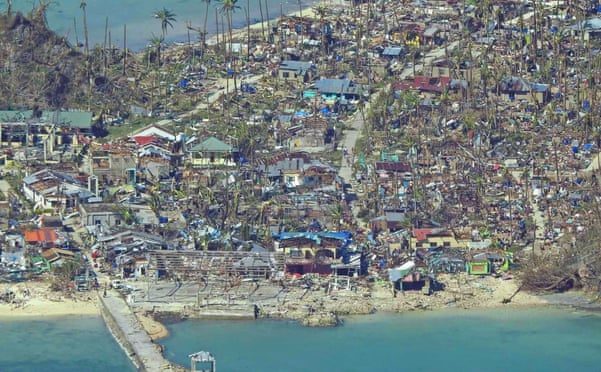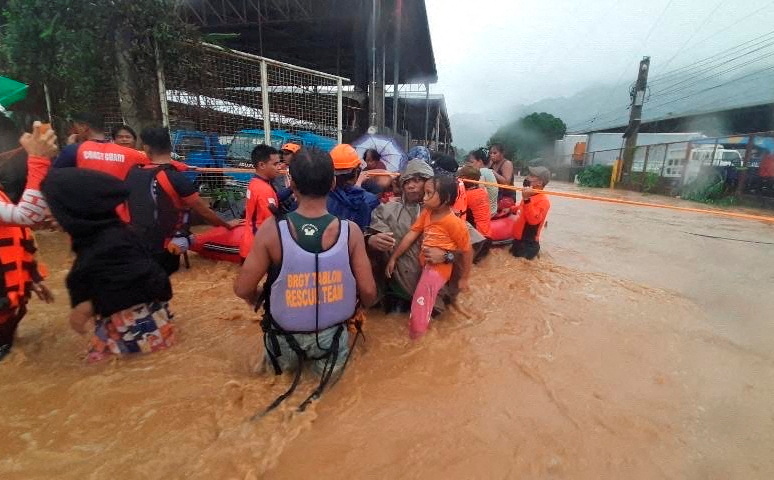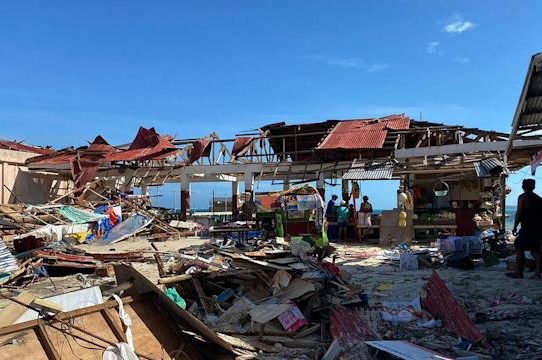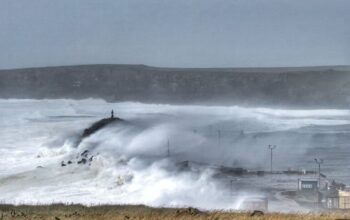Rescue efforts continue as Super typhoon Rai. The strongest typhoon of the year

More than 300 people have been in killed by a powerful typhoon in the Philippines that destroyed homes, flooded towns, severed power and communications lines and displaced hundreds of thousands in its central and southern regions.
Military airplanes and naval vessels were dispatched on Monday to carry aid to areas devastated by Typhoon Rai, as the country grappled with the strongest of 15 such storms to hit the archipelago this year.
“We are still assessing the damage, but it is huge,” Defense Secretary Delfin Lorenzana told reporters on Monday. “The first thing we are doing is address the food and water (supplies) and medical care of the injured.”
Lorenzana told the armed forces to deliver relief goods using all available assets, and send in more troops if necessary.
The number of storm-related deaths climbed throughout Monday as rescue efforts continued in hard-hit areas.
As of 1000 GMT, the death count from Rai has risen to 375, the police said in a report, making it one of the deadliest typhoons to have struck the Southeast Asian nation. The number of injured has climbed to 500, while 56 people were missing.
The count, which according to the police was subject to validation, far outstripped the 58 deaths recorded by the national disaster agency, which said it was still checking reports from affected areas.
The majority of the deaths reported by police were in the central region of Visayas, home to dive spots in Bohol province, among some of the most popular tourist destinations, and the Caraga region in northeastern Mindanao.
Provincial governor Arthur Yap told broadcaster CNN Philippines he feared the death toll could rise further, as a lack of mobile telephone links made it hard to gather information.
Rai, which made landfall as a category 5 typhoon on Thursday, revived memories of the devastation brought in 2013 by Typhoon Haiyan, one of the most powerful tropical cyclones ever recorded, which killed 6,300 people in the Philippines.
Rai displaced nearly 490,000 people in the Philippines before moving toward the South China Sea over the weekend.
It left a trail of destruction in the provinces of Cebu, Leyte, and Surigao del Norte, including Siargao, which is popular with surfers, and the Dinagat Islands. Read more from Ndtv
Subscribe here
The following written content from December 19th

The governor of an island province in the central Philippines said Sunday at least 63 people died in the devastation wrought by Typhoon Rai in more than half of the towns that managed to contact him, bringing the death toll in the strongest typhoon to batter the country this year to at least 112.
Gov. Arthur Yap of Bohol province said 10 others were missing and 13 injured, and suggested the fatalities may still considerably increase with only 33 out of 48 mayors able to report back to him due to downed communications. Officials were trying to confirm a sizable number of deaths caused by landslides and extensive flooding elsewhere.
In statements posted on Facebook, Yap ordered mayors in his province of more than 1.2 million people to invoke their emergency powers to secure food packs for large numbers of people along with drinking water, which he said was an urgent problem since water stations were down during power outage.
After joining a military aerial survey of typhoon-ravaged towns, Yap said “it is very clear that the damage sustained by Bohol is great and all-encompassing.”
He said the initial inspection did not cover four towns, where the typhoon blew in as it rampaged on Thursday and Friday through central island provinces. The government said about 780,000 people were affected, including more than 300,000 residents who had to evacuate their homes.

At least 64 other typhoon deaths were reported by the disaster-response agency, the national police and local officials. Most were hit by falling trees and collapsed walls, drowned in flash floods or were buried in landslides. Officials on Dinagat Islands, one of the southeastern provinces first pounded by the typhoon, separately reported 10 deaths just from a few towns, bringing the overall fatalities so far to 146.
President Rodrigo Duterte flew to the region Saturday and promised 2 billion pesos ($40 million) in aid. He met officials in Maasin City in Southern Leyte province where he was born. Duterte’s family later relocated to the southern city of Davao, where he served as a longtime mayor before rising to the presidency.
“The moment I was born into this world, I told my mother, `Let’s not stay here because this place is really prone to typhoons,’” Duterte told officials.
At its strongest, the typhoon packed sustained winds of 195 kilometers (121 miles) per hour and gusts of up to 270 kph (168 mph), making it one of the most powerful in recent years to hit the disaster-prone archipelago, which lies between the Pacific Ocean and the South China Sea.
Floodwaters rose rapidly in Bohol’s riverside town of Loboc, where residents were trapped on their roofs and in trees. They were rescued by the coast guard the following day. On Dinagat Islands, an official said the roofs of nearly all the houses, including emergency shelters, were either damaged or blown away entirely.
At least 227 cities and towns lost electricity, which has since been restored in only 21 areas, officials said, adding that three regional airports were damaged, including two that remain closed.
The deaths and widespread damage left by the typhoon ahead of Christmas in the largely Roman Catholic nation brought back memories of the catastrophe inflicted by another typhoon, Haiyan, one of the most powerful on record. It hit many of the central provinces that were pummeled last week, leaving more than 6,300 people dead in November 2013.
At the Vatican, Pope Francis expressed his closeness Sunday to the people of the Philippines, referencing the typhoon “that destroyed many homes.” About 20 storms and typhoons batter the Philippines each year. Read more from Fox





